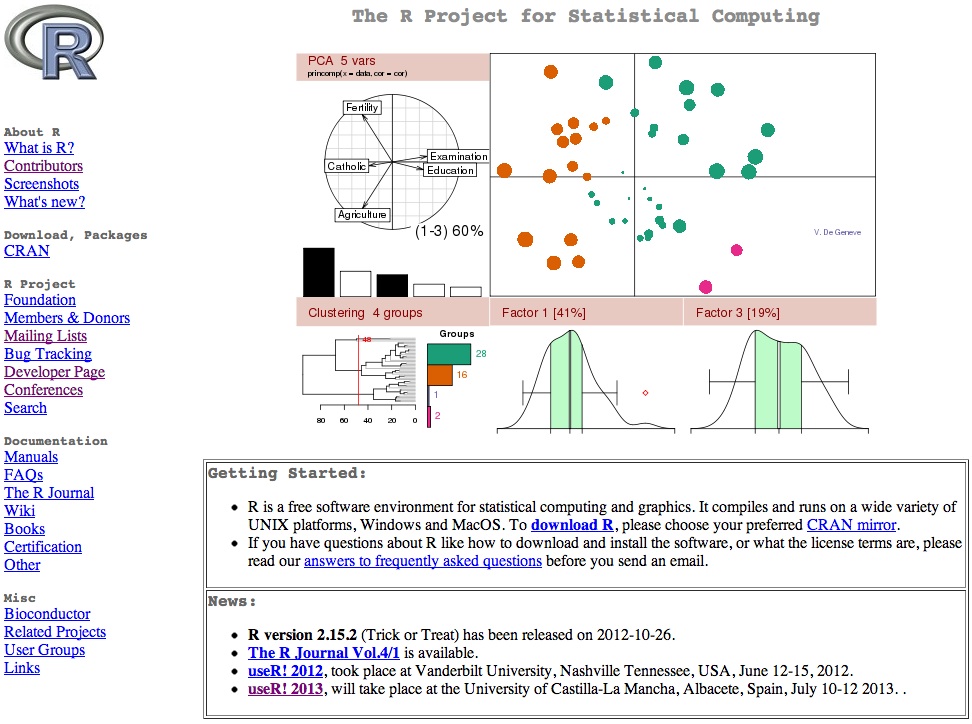First go and read An R wish list for 2012. None of the wishes came through in 2012. Fix the R website? No, it is the same this year. In fact, it is the same as in 2005. Easy to find help? Sorry, next year. Consistency and sane defaults? Coming soon to a theater near you (one day). Thus my wish list for 2012 is, very handy, still the wish list for 2013.
R as social software
The strength of R is not the software itself, but the community surrounding the software. Put another way, there are several languages that could offer the core functionality, but the whole ‘ecosystem’ that’s another thing. Innovation is (mostly) happening outside the core.
This prompts some questions: Why isn’t ggplot2 or plyr in the default download? I don’t know if some people realize that ggplot2 is now one of the main attractions for R as data visualization language. Why isn’t Hadley’s name in this page? (Sorry I’m picking on him, first name that came to mind). How come there is not one woman in that page? I’m not saying there is an evil plan, but I’m wondering if (and how) the site and core reflect the R community and the diversity of interests (and uses). I’m also wondering what is the process to express these questions beyond a blog post. Perhaps in the developers email list?
I think that, in summary, my R wish for 2013 is that ‘The R project’—whoever that is—recognizes that the project is much more than the core download. I wish the list of contributors goes beyond the fairly small number of people with writing access to the source. I’d include those who write packages, those who explain, those who market and, yes, those who sell R. Finally, I wish all readers of Quantum Forest Palimpsest a great 2013.

P.S. Just in case, no, I’m not suggesting to be included in any list.